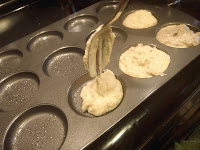I am really not a huge fan of fruit served with hot main dishes, but rhubarb is actually a vegetable and you have to add sugar to it to sweeten it for baking, so it really can become savoury.
The word "chutney" is South-east Asian in origin and generally refers to a vegetable or fruit based condiment that is flavoured often with chili and ginger, and aromatic spices such as coriander and cumin.
There is no limit to what you can do with a chutney as they can be made from virtually any vegetable-fruit-spice combination. The only real difference is the base ingredient and whether or not they are sweet or hot. Given that I want all of my family to be able to eat this chutney, I am going to stick to the mild side of life so my favourite Junior Chef can eat it too. One day we will get that child to work on his spice metre! In time...
1/3 cup cider vinegar
1 tablespoon freshly grated ginger root
2 teaspoons ground cumin
1/2 teaspoon ground cinnamon
1/2 teaspoon ground allspice
The word "chutney" is South-east Asian in origin and generally refers to a vegetable or fruit based condiment that is flavoured often with chili and ginger, and aromatic spices such as coriander and cumin.
There is no limit to what you can do with a chutney as they can be made from virtually any vegetable-fruit-spice combination. The only real difference is the base ingredient and whether or not they are sweet or hot. Given that I want all of my family to be able to eat this chutney, I am going to stick to the mild side of life so my favourite Junior Chef can eat it too. One day we will get that child to work on his spice metre! In time...
This week I will serve this chutney with a nice slow-cooked pork loin roast or thick cut pork loin chops with purple fingerling potatoes. Kind of an homage to Lynn Crawford and the dinner we had at her fabulous Ruby Watchco to celebrate our May occasions - my birthday, Mother's Day, our anniversary and Brenden's birthday.
This is a very cool pic of Justin with Chef Lynn in her kitchen. She was incredible with him and so kind. He of course charmed her completely - he is a smoothie with the ladies. When we left the restaurant he actually asked if they needed a door boy.. LOL.
This recipe is kind of a combination of a variety of recipes I found on-line, modified to taste how I wanted it to taste and what I had on hand.
Rhubarb Chutney
1/3 cup sugar
This is a very cool pic of Justin with Chef Lynn in her kitchen. She was incredible with him and so kind. He of course charmed her completely - he is a smoothie with the ladies. When we left the restaurant he actually asked if they needed a door boy.. LOL.
This recipe is kind of a combination of a variety of recipes I found on-line, modified to taste how I wanted it to taste and what I had on hand.
Rhubarb Chutney
1/3 cup sugar
1 tablespoon freshly grated ginger root
2 teaspoons ground cumin
1/2 teaspoon ground cinnamon
1/2 teaspoon ground allspice
1/2 teaspoon turmeric
3 stalks rhubarb, diced
1 large white onion, diced
2/3 cup golden raisins
1 large white onion, diced
2/3 cup golden raisins
Combine sugar, vinegar and spices in a large pan and simmer until sugar is dissolved. Add rhubarb, onion and raisins. Increase heat to medium-high and cook until rhubarb is tender and mixture thickens slightly, about 15 minutes. Cool completely.
This recipe made about 1 litre of chutney. If you plan to keep it for more than a few weeks, place the jars in a hot water bath and process for about 10 minutes in boiling water.
This recipe made about 1 litre of chutney. If you plan to keep it for more than a few weeks, place the jars in a hot water bath and process for about 10 minutes in boiling water.

















































